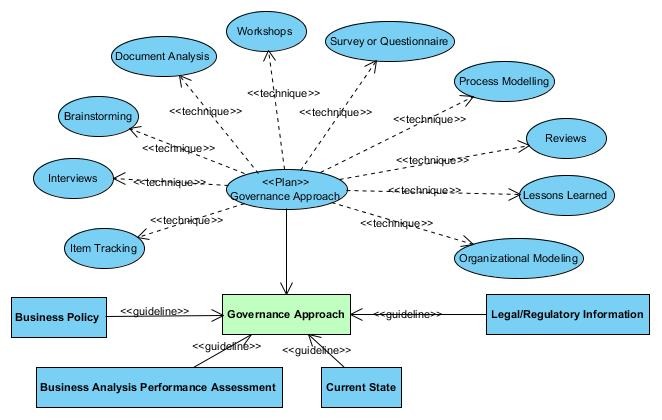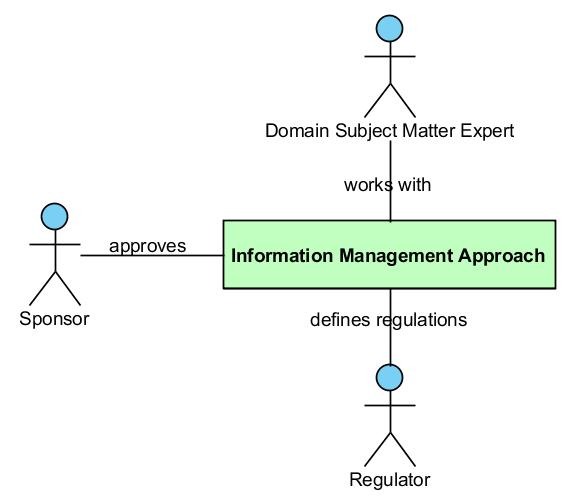Plan Governance Approach
The purpose of Plan Business Analysis Governance is to define how decisions are made about requirements and designs, including reviews, change control, approvals, and prioritization.
Guidelines/Tools and Techniques
The guidelines/tools and techniques used to plan governance.


Plan Governance Approach - Uses Brainstorming, Document Analysis, Interviews, Item Tracking, Lessons Learned, Organizational Modeling, Process Modeling, Surveys and Questionnaires and Workshops techniques to create a governance approach.
A Governance Approach – Uses the Business Analysis Performance Assessment, Business Policies, the Current State Description, and Legal/Regulatory Information as guidelines.
The relationships between these guidelines, tools, techniques and the Governance Approach are detailed in the BABOK under the Guidelines and Tools and Techniques sections of the Plan Governance Approach task.
Workers
The people involved with planning the governance approach.


The relationships between these roles and the Governance Approach are detailed in the BABOK under the Stakeholders section of Plan Governance Approach task.
Domain Subject Matter Expert - A source of a requested change needed to be involved in change discussions.
Project Manager - Ensures that project governance aligns with the business analysis governance plan.
Regulator - Imposes rules and regulations to be considered in the business analysis governance approach.
Sponsor - Imposes requirements for how business analysis information should be managed.